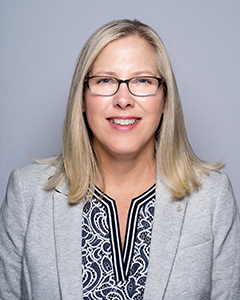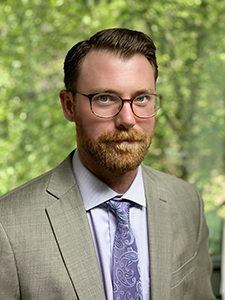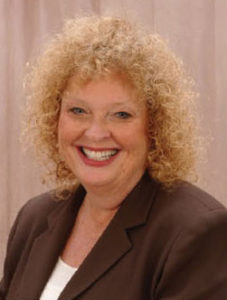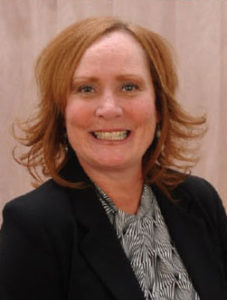Originally Written by Adam S. Minsky for Forbes.com
Edited for clarity and brevity by Gleba & Associates
Millions of Americans will soon have to resume making student loan payments as the three-year student loan pause comes to an end.
The student loan moratorium has been in effect since March 2020. During that time, federal student loan borrowers have had payments suspended and interest rates set to zero. Borrowers in default on their federal student loans have not had to face collections efforts.
After the Supreme Court ruled last week to strike down Biden’s one-time student loan forgiveness plan, President Biden signed a federal spending bill codifying the end of the student loan pause last month, so the moratorium is coming to an end. The administration has promised several new flexibilities for borrowers to ease transition, but student loan payments are resuming.
Here’s what borrowers should know.
When Student Loan Interest Starts Accruing Again
Most federal student loan borrowers have enjoyed a temporary 0% interest rate since the student loan pause first went into effect in 2020. But that will be ending. “Normal” interest rates will turn back on by September 1st.
Most federal student loan interest rates are set by Congress and are fixed (meaning they don’t change) based on the date of disbursement and are not impacted by market conditions. For most borrowers, interest rates should return to what they were prior to the student loan pause going into effect.
“For most borrowers, unpaid interest will not capitalize during the payment pause and through six months after the payment pause ends,” says Education Department guidance.
When Student Loan Payments Resume
Federal law requires the Education Department and its contracted loan servicers to generate and send billing statements to borrowers, and to provide borrowers with a sufficient window to pay their student loans before the billing due date. While interest will resume in September, student loan payments won’t actually be due until October.
New Biden Student Debt Relief Initiatives To Ease Transition To Repayment
In response to last week’s Supreme Court decision on student loan forgiveness, President Biden announced new initiatives to ease borrowers’ transition into repayment.
Borrowers will have a 12-month “on-ramp” period following the end of the student loan pause. During this time, payment will be due and interest will accrue. But borrowers will not incur late fees, penalties, or negative credit reporting for missing payments. However, unlike the student loan pause period, missed payments will not count toward student loan forgiveness for income-driven repayment or Public Service Loan Forgiveness.
Biden also announced a new student loan repayment plan tied to a borrower’s income, called the Saving on a Valuable Education (SAVE) plan. The plan is effectively an overhaul of the Revised Pay As You Earn (REPAYE) plan, one of the available income-driven repayment options. The SAVE plan will reduce many borrowers’ monthly student loan payments by nearly $100 per month or more, according to the Education Department. Some elements of the SAVE plan are expected to be available by the time student loan payments resume.
Borrowers In Default Have Other Student Debt Relief Options
The Education Department’s new Fresh Start program is now available for borrowers in default on their federal student loans. Fresh Start provides a pathway for defaulted federal student loan borrowers to restore their loans to good standing so that they can access other critical federal student debt relief programs, including potential student loan forgiveness.
Borrowers will have one year after the student loan pause ends to access Fresh Start. During that time, the Education Department will not engage in collections actions against borrowers and will not negatively report defaulted federal student loans to credit bureaus.
Borrowers who get out of default through Fresh Start or another program by the end of this year may be able to receive three years or more of credit toward student loan forgiveness under income-driven repayment plans or Public Service Loan Forgiveness.
What Borrowers Should Do As Student Loan Payments Resume
With student loan payments resuming in only a few months, borrowers should start taking steps now to prepare for repayment.
First, the Education Department recommends verifying who your student loan servicer is. Up to 30 million borrowers may have a different loan servicer than they had in 2020 by the time payments resume, according to a recent report by the Consumer Financial Protection Bureau. Transitions to new loan servicers can be chaotic and disruptive and may lead to confusion and missed payments. Borrowers can verify who their current federal student loan servicer is by logging into their Federal Student Aid account at StudentAid.gov. Make sure to update your contact information.
Borrowers should also evaluate their repayment plan options, and particularly income-driven repayment (IDR) plans. The Education Department is in the early stages of implementing the IDR Account Adjustment, which may get millions of borrowers closer to loan forgiveness, even for those who have not been in IDR. And some elements of the new SAVE plan will be available by the time student loan payments resume, according to the department.
Borrowers can apply for IDR prior to student loan payments resuming. And borrowers who have experienced a reduction in income since their last IDR income recertification can request a recalculation. The Education Department is temporarily allowing borrowers to self-report their income for IDR plans, rather than requiring borrowers to provide supporting documentation, to ease the transition back to repayment.
The Education Department also recommends that borrowers who were on auto-debit prior to the student loan pause re-evaluate their status. “If you were enrolled in auto-debit before the payment pause and you would like to resume when payments resume, you need to confirm your auto-pay enrollment with your student loan servicer if you haven’t already done so,” says the department.
—
If you have any questions about the current market, or anything else, you can always contact us by giving us a call at (248) 879-4510 or sending an email to info@GlebaAndAssociates.com.
Original article: Here’s When Student Loan Payments Resume, And What Borrowers Should Do (forbes.com)




 Invest Well. Manage Well. Live Well.
Invest Well. Manage Well. Live Well. Gary is a Financial Associate at Gleba & Associates, Inc., joining our team in June 2020. After graduating from Walsh College with a Bachelor’s Degree in Finance in 2013, he began his career at Raymond James Financial Services. He then moved to the world of banking, working as a banker with Chase Private Client and then as an Assistant Vice President, Financial Advisor with PNC Investments. Gary has expertise in all aspects of financial planning including investment management, higher education planning, life insurance, and long-term care insurance needs analysis. When he gets away from the office, he loves to spend time with his wife, Lauren, and two daughters, Hadley and Harper. He enjoys woodworking, boating, summer weekends at the family cottage, spending time outdoors and traveling.
Gary is a Financial Associate at Gleba & Associates, Inc., joining our team in June 2020. After graduating from Walsh College with a Bachelor’s Degree in Finance in 2013, he began his career at Raymond James Financial Services. He then moved to the world of banking, working as a banker with Chase Private Client and then as an Assistant Vice President, Financial Advisor with PNC Investments. Gary has expertise in all aspects of financial planning including investment management, higher education planning, life insurance, and long-term care insurance needs analysis. When he gets away from the office, he loves to spend time with his wife, Lauren, and two daughters, Hadley and Harper. He enjoys woodworking, boating, summer weekends at the family cottage, spending time outdoors and traveling. Conor is a Financial Associate at Gleba & Associates, Inc., where he started in 2018. Conor has prior experience in the financial planning industry, as well as in the insurance industry. His high level of understanding insurance and financial products helps him in assessing the needs of our clients. He holds a Bachelor of Science degree in Business Administration with a concentration in Finance from the University of Detroit Mercy. You can often find Conor playing soccer or walking with his two dogs Milo, and Ellie. He is also an avid follower of the Detroit Tigers, Detroit Red Wings and his alma mater, the University of Detroit Mercy Titans.
Conor is a Financial Associate at Gleba & Associates, Inc., where he started in 2018. Conor has prior experience in the financial planning industry, as well as in the insurance industry. His high level of understanding insurance and financial products helps him in assessing the needs of our clients. He holds a Bachelor of Science degree in Business Administration with a concentration in Finance from the University of Detroit Mercy. You can often find Conor playing soccer or walking with his two dogs Milo, and Ellie. He is also an avid follower of the Detroit Tigers, Detroit Red Wings and his alma mater, the University of Detroit Mercy Titans. Lorie Heitzer is our Financial Associate at Gleba & Associates, Inc., where she has been a valuable employee for more than a decade! In her current role, Lorie assists with client reviews, implements client financial planning, and handles preparation of investment paperwork. During her time with Gleba & Associates, Lorie has earned her Series 6 (Investment Company Variable Contracts Representative), 63 (Uniform Securities Agent) and Life Insurance Licenses, allowing her to move into her current role where she assists clients in both of these areas. Lorie and her husband Bill, along with their daughters Lauren and Alexandria, and sons-in-law, Andrew & Joe, enjoy golf and make it a family event whenever possible. Her tenure at Gleba & Associates speaks volumes to her passion for the firm’s family atmosphere and her dedication to our clients and their financial and insurance needs.
Lorie Heitzer is our Financial Associate at Gleba & Associates, Inc., where she has been a valuable employee for more than a decade! In her current role, Lorie assists with client reviews, implements client financial planning, and handles preparation of investment paperwork. During her time with Gleba & Associates, Lorie has earned her Series 6 (Investment Company Variable Contracts Representative), 63 (Uniform Securities Agent) and Life Insurance Licenses, allowing her to move into her current role where she assists clients in both of these areas. Lorie and her husband Bill, along with their daughters Lauren and Alexandria, and sons-in-law, Andrew & Joe, enjoy golf and make it a family event whenever possible. Her tenure at Gleba & Associates speaks volumes to her passion for the firm’s family atmosphere and her dedication to our clients and their financial and insurance needs. Terri is the Service Manager at Gleba & Associates, Inc., Joining the team in April, 2015. In her role, she handles client service requests and underwriting. Terri’s previous experience in 401(k) Retirement Plans, Payroll and Human Resource Administration is invaluable, allowing Gleba & Associates to grow and run efficiently. This is knowledge that can also assist our small business clients as they grow their businesses. Terri enjoys spending time with family, which includes her husband, Gerry and her two children, Vincent and Genna. She loves the outdoors and camping with family in their RV. Terri looks forward to continuing the high level of customer service you have come to expect from Gleba & Associates!
Terri is the Service Manager at Gleba & Associates, Inc., Joining the team in April, 2015. In her role, she handles client service requests and underwriting. Terri’s previous experience in 401(k) Retirement Plans, Payroll and Human Resource Administration is invaluable, allowing Gleba & Associates to grow and run efficiently. This is knowledge that can also assist our small business clients as they grow their businesses. Terri enjoys spending time with family, which includes her husband, Gerry and her two children, Vincent and Genna. She loves the outdoors and camping with family in their RV. Terri looks forward to continuing the high level of customer service you have come to expect from Gleba & Associates! Michael is the Marketing Manager at Gleba & Associates, Inc., where he began in August 2017. In his position, Michael creates and develops marketing strategies to enhance the image of Gleba & Associates, and helps maximize the Client-Advisor relationship. He is also in charge of company events, seminars, and educational workshops. Michael has a Bachelor of Applied Arts Degree in Integrative Public Relations from Central Michigan University. When he is not in the office, Michael can most likely be found playing billiards, playing poker, on the tennis court, or rooting on the Utica Unicorns baseball team. Michael stays active by going to the gym and going to the dog park with his Labrador-mix, Milton. His approachable attitude, along with experience in marketing, communications, and social media, makes him a valuable asset to the Gleba & Associates team.
Michael is the Marketing Manager at Gleba & Associates, Inc., where he began in August 2017. In his position, Michael creates and develops marketing strategies to enhance the image of Gleba & Associates, and helps maximize the Client-Advisor relationship. He is also in charge of company events, seminars, and educational workshops. Michael has a Bachelor of Applied Arts Degree in Integrative Public Relations from Central Michigan University. When he is not in the office, Michael can most likely be found playing billiards, playing poker, on the tennis court, or rooting on the Utica Unicorns baseball team. Michael stays active by going to the gym and going to the dog park with his Labrador-mix, Milton. His approachable attitude, along with experience in marketing, communications, and social media, makes him a valuable asset to the Gleba & Associates team. Moiz is our Financial Associate at Gleba & Associates, Inc., where he began in 2013 after working for Bank of America and Thomson Reuters in various financial roles. In his position, Moiz assists in the research of financial solutions in order to meet client’s needs, conducts client reviews, provides insurance quotes, offers detailed financial plans, and delivers follow-up services to our clients. Before moving to the United States in 2004, Moiz grew up in rural India, where he was raised in a family of entrepreneurs. This allowed him to quickly learn the value of financial investment. Moiz holds a Bachelor of Commerce Degree in Accounting from Gujrat University and a B.B.A. in Management and an MBA from Walsh College of Accountancy and Business Administration, where he was elected as a member of Delta Mu Delta, the International Honor Society in Business Administration in recognition of high scholastic attainment. Moiz enjoys spending time with his wife, Tasneem, son, Taha, and family. He also loves playing tennis and rebuilding computers. His expertise in the areas of banking, mortgage and taxation helps to provide our clients with distinct portfolio advice as well as overall financial direction and growth.
Moiz is our Financial Associate at Gleba & Associates, Inc., where he began in 2013 after working for Bank of America and Thomson Reuters in various financial roles. In his position, Moiz assists in the research of financial solutions in order to meet client’s needs, conducts client reviews, provides insurance quotes, offers detailed financial plans, and delivers follow-up services to our clients. Before moving to the United States in 2004, Moiz grew up in rural India, where he was raised in a family of entrepreneurs. This allowed him to quickly learn the value of financial investment. Moiz holds a Bachelor of Commerce Degree in Accounting from Gujrat University and a B.B.A. in Management and an MBA from Walsh College of Accountancy and Business Administration, where he was elected as a member of Delta Mu Delta, the International Honor Society in Business Administration in recognition of high scholastic attainment. Moiz enjoys spending time with his wife, Tasneem, son, Taha, and family. He also loves playing tennis and rebuilding computers. His expertise in the areas of banking, mortgage and taxation helps to provide our clients with distinct portfolio advice as well as overall financial direction and growth.